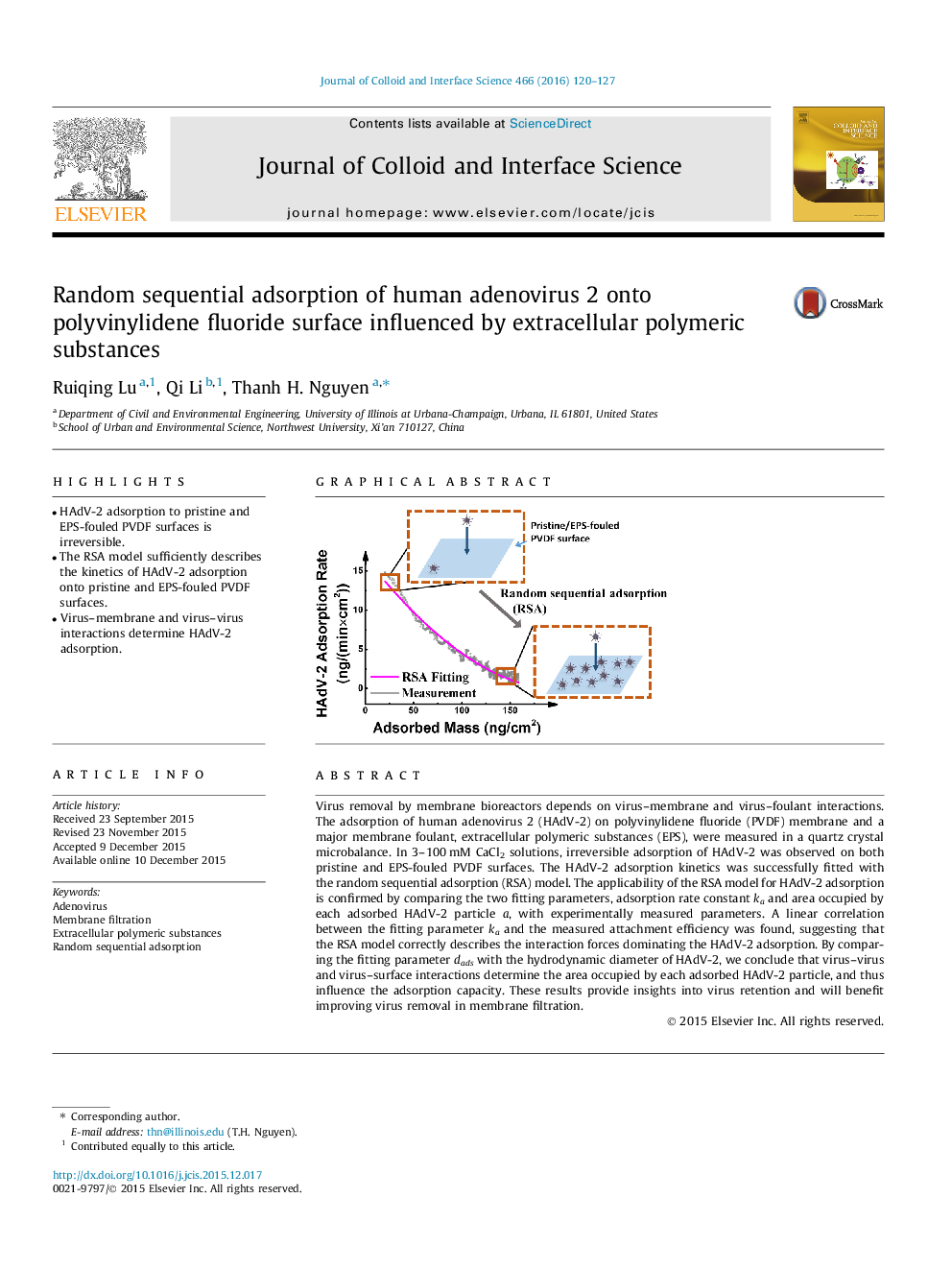| Article ID | Journal | Published Year | Pages | File Type |
|---|---|---|---|---|
| 606340 | Journal of Colloid and Interface Science | 2016 | 8 Pages |
•HAdV-2 adsorption to pristine and EPS-fouled PVDF surfaces is irreversible.•The RSA model sufficiently describes the kinetics of HAdV-2 adsorption onto pristine and EPS-fouled PVDF surfaces.•Virus–membrane and virus–virus interactions determine HAdV-2 adsorption.
Virus removal by membrane bioreactors depends on virus–membrane and virus–foulant interactions. The adsorption of human adenovirus 2 (HAdV-2) on polyvinylidene fluoride (PVDF) membrane and a major membrane foulant, extracellular polymeric substances (EPS), were measured in a quartz crystal microbalance. In 3–100 mM CaCl2 solutions, irreversible adsorption of HAdV-2 was observed on both pristine and EPS-fouled PVDF surfaces. The HAdV-2 adsorption kinetics was successfully fitted with the random sequential adsorption (RSA) model. The applicability of the RSA model for HAdV-2 adsorption is confirmed by comparing the two fitting parameters, adsorption rate constant ka and area occupied by each adsorbed HAdV-2 particle a, with experimentally measured parameters. A linear correlation between the fitting parameter ka and the measured attachment efficiency was found, suggesting that the RSA model correctly describes the interaction forces dominating the HAdV-2 adsorption. By comparing the fitting parameter dads with the hydrodynamic diameter of HAdV-2, we conclude that virus–virus and virus–surface interactions determine the area occupied by each adsorbed HAdV-2 particle, and thus influence the adsorption capacity. These results provide insights into virus retention and will benefit improving virus removal in membrane filtration.
Graphical abstractFigure optionsDownload full-size imageDownload high-quality image (146 K)Download as PowerPoint slide
